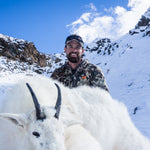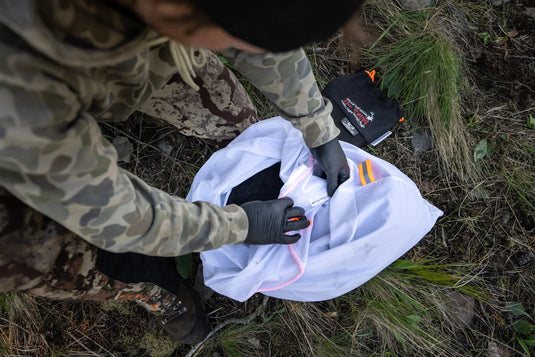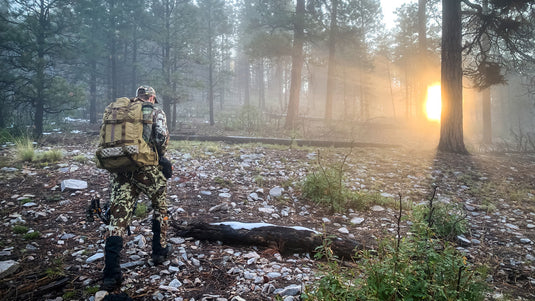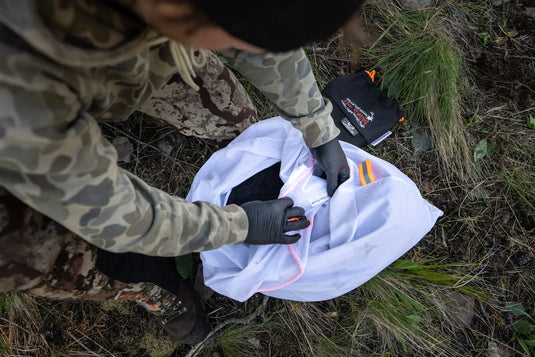It’s that time of year! Time to begin planning a new year of big game hunting adventures. In a previous post, we covered some frequently asked questions about applying for bighorn sheep, mountain goat and moose tags in Colorado. In this installment, we will tackle some FAQs about the draw for elk, deer and pronghorn.
When it comes to applying for limited big game licenses in Colorado, the draw for the “big three” (sheep, goat and moose) works completely differently than it does for the rest of the state’s big game species. Each one has its pros and cons. In case you missed that previous article on applying for sheep, goat and moose, check it out here.
Now, let’s take a look at some of the most frequently asked questions about applying for deer, elk and pronghorn tags in Colorado…

How Does the Draw Work?
If you read our previous piece about sheep, goat and moose tags, you’ll know that these tags are issued in what is basically a lottery – anyone with three preference points has a chance to draw. It might be a small chance – but at least there’s a chance! The benefit of any lottery-type draw system is having a chance to draw. You don’t have to accumulate decades worth of points before you’re in the hunt for a tag. The downside of these draw systems, is that there is no predictability. You can’t plan for it. When you draw, it will be a complete surprise.
On the other hand, elk, deer and pronghorn tags in Colorado are distributed in a true preference point system. This means the applicant with the most points gets the tag. The benefit of a preference point system is that it’s highly predictable. You can see how many points it took to draw any given tag last year – and based on inflation or “point creep” how many points it will probably take to draw next year. The downside of a preference point system is that until you have the required number of points, there is no chance of drawing a tag (Colorado’s “hybrid tags” are one exception – see below). That is to say, if last year a certain hunt took 3 preference points to draw and you have zero points now, you have absolutely no chance of drawing that tag this year.
(Hybrid Tags: Colorado does give out a very few deer elk and pronghorn tags in a random lottery. These “hybrid tags” are for extremely high demand units. And to be eligible to draw one, an applicant must have at least 5 preference points. To see which tags are available in the hybrid draw and to learn more, check the Colorado Big Game Brochure.)
On your hunt application in Colorado, you will have four choices for each species. When it comes time for the draw, the system looks at everyone’s first choice and licenses will be distributed to applicants with the most points, until all available licenses are sold out. Only if there are remaining licenses after considering everyone’s first choice, then the system will attempt to distribute those remaining licenses to anyone who applied for that hunt as their second choice – and so on.
Only the first choice round uses preference points. If you are not successful in drawing a first choice license, you will be awarded a preference point for that species. If you are successful in drawing a first choice license, your preference points will be reset to zero. In the second, third and fourth choice rounds, licenses will be distributed to applicants randomly, wherever there are licenses remaining. If you draw a second-choice license, you will still gain a point because you didn't draw your first choice.
(Strategy Tip: If you are saving preference points for a specific hunt, you can apply for a preference point in the first choice section of your application. Then, you can apply for another tag second choice or purchase an over-the-counter license. Look at the draw odds on GoHunt or the CPW website to see which tags can be drawn second choice, third choice, etc. By gaining a point with your first choice and drawing a tag second choice, you can have your cake and eat it too. Just be aware that most tags that are available as second-choice options are usually antlerless tags or otherwise not high-demand hunts.)
You can accumulate one preference point per species, per year. Preference points are not specific to the type of weapon or the unit. They are only specific to each species. An elk point can be used in any unit, for any elk season.
Since the system looks at everyone’s first choice before moving on to second choices, it’s safe to assume that all high-demand tags sell out in the first choice round. That doesn’t mean you can’t draw a tag second choice. In fact, there are some decent antlerless tags and under-subscribed hunts that can be drawn as a second choice. Just be sure and check the draw stats before you apply, so that you don’t waste your choices. And that brings us to our second frequently asked question – what are your chances of drawing a tag?

What Are My Chances of Drawing?
Because Colorado’s big game licenses for elk, deer and pronghorn are distributed in a preference point system, it makes applying for these species fairly predictable. You can look at the draw stats from last year and see exactly how many points it took to draw any given tag. Or if it didn’t take any points, which tags can be drawn second choice, third choice, etc.
Where do you find all of these draw odds? For starters, you can’t beat all the great resources and tools available from our good friends at GoHunt.com. Their draw odds and filtering tools allow you to find which hunts are available at which preference point levels. On top of the draw odds, you can filter units by trophy quality, public land availability, and a number of other factors. There is no better way to do research for your big game applications.
If you’re not ready to buy a GoHunt subscription, you can find draw odds on the Colorado Parks and Wildlife (CPW) website. It just takes a bit more legwork and you won’t have all those other filters at your fingertips. On the CPW website under the big game section, you can look up the draw stats for each species by year.
As you are looking at the draw stats from last year, be sure to compare that to several previous years. That will give you an idea of the inflation or “point creep” that happens each year. This will help you determine how many points it will take to draw a given tag next year. For example, some high-demand elk hunts inflate by about a half-point per year. That means that if a hunt took 4 points to draw this year, it may have been 3 points two years ago. And in another two years it might take 5 points to draw.
Whether you use the tools available from GoHunt or if you’re looking at stats on the CPW website, decide which units you’re interested in applying for this year – or if you want to save up points for a specific hunt, how long it will take you to get there.

Which Units Should I Apply For?
Deciding which units to apply for must start with clearly defining your goals. Are you willing to save up preference points for ten or more years for a very high-demand hunt? Or would you rather cash in your points every couple of years and hunt limited units more often? Remember that in the “off years” for each species while you save a point, you can still purchase an over-the-counter tag or draw a second choice tag. Just because you are saving points doesn't meant you can't go hunting in the meantime. It just means hunting lesser quality units.
Once you clearly define your hunting goals for each species, then it becomes easier to decide which hunts to apply for. Looking at the draw stats, harvest stats and trophy potential, which units will help you meet those expectations? How long will it take to draw? Make a plan and go for it!
When it comes to setting goals and planning your hunting season, take a few minutes to read our previous article, 8 Ideas to Help You Plan More Successful Big Game Hunts. This article goes into more detail on setting goals and planning out your season.
Gear for the Adventure
As you plan each hunt and plan out your applications this season, keep an eye on the gear we carry in the Caribou Gear Store. The items we carry are those that we use and trust in the field. From Kenetrek Boots to Knives of Alaska, these are the items we recommend. And when it comes to meat care, our Caribou Gear Game bags and meat care accessories are as good as it gets. Check out this article about the science behind Caribou Gear Game Bags.
Have questions? Please reach out. We’d love to help as you decide on the right gear for your upcoming hunting trips. Best of luck on all of your adventures this year!

By Ryan McSparran
Ryan is a hunting guide based in Colorado, and is proud to be a part of the team at Caribou Gear.
